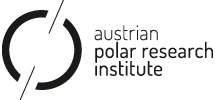“I think we also need to think about who Longyearbyen is for. Is it meant to be pretty for tourists? Practical for industry? For the people who live here?”
“You don’t have an upper class and a lower class but you are dividing people into groups with the housing situation.”
“The town is super cozy, and it’s really easy to get along with people, it’s a very international community, so everyone is super open-minded, and open to meet people and it’s easy to integrate and start a life.”
“I think a lot of people live here because they don’t want to live in a big city. They want to be outdoors. We should acknowledge that and make more meeting spaces outside.”
“We should be a showcase for the world when it comes to the environment and energy. From a mining community that used only coal and produced CO2 to a tiny little village that doesn’t pollute at all.”
Ever wondered about how it is to live in the world’s northernmost town, and how people living there perceive and use the place? The quotes above are by residents of Longyearbyen, Svalbard. Longyearbyen is a small (ca. 2300 inhabitants) but very diverse and international town at 78 degrees North that is currently experiencing climatic and socio-economic changes, as its economy is being restructured from coal mining to tourism, research and education. When the world went into lockdown in spring 2020, I was lucky enough to stay in (at the time) corona-free Longyearbyen and participate in a project about people’s use and perceptions of the town and their dreams for the future development of the place. The project developed in collaboration between the local architectural office in Longyearbyen, LPO arkitekter, and the Svalbard Social Science Initiative, a network for social scientists researching on all things Svalbard. Through my fieldwork for my PhD in social anthropology about climate change in Longyearbyen, I got to know Ingvild and Lilli at LPO arkitekter, and started collaborating with my social-science colleagues Dina and Zdenka in Longyearbyen.
Longyearbyen (©Google).
The architects had received funding for a project to look into how buildings and materials can be relocated and reused on Svalbard, where all building materials have to be imported from the mainland, at a time when a whole mining settlement is being torn down and the remains are removed from the archipelago as waste. A central part of this project was a needs assessment to find out what people living in Longyearbyen want to see being developed in terms of public spaces. They asked us social scientists if we wanted to provide some input on how this could be achieved, and driven by a shared interest in the material and social fabric of Longyearbyen we developed the project “Folk om Longyearbyen”, “People about Longyearbyen”.

Folk om Longyearbyen (©illustration by LPO arkitekter).
Gathering data through focus groups and working with maps
Between March and June 2020, we carried out nine focus groups with different subgroups in town, including parents, Svalbard “veterans” (long-term inhabitants, quite rare to come across in a town with an yearly turnover rate of 25%), people working in the service sector, community workers, guides, students, technical workers, pupils at the local folk high school, and an open group. Focus groups are a common method for collecting qualitative data; they are focused group discussions, moderated and recorded in this case by one architect and one social scientist. We asked the groups to describe the town, how they use it and its public spaces, what they feel is lacking and what they wish would be developed, and how they see the future of Longyearbyen. The participants were handed out maps of the town where they could visualize what they were discussing. While the questions we posed were about the built environment and (public) space, the discussions often turned out to be about social aspects of life in Longyearbyen. For example, we learned that the town is perceived as composed of different bubbles or segments, and that in this context, public spaces are crucial for social integration. Another key finding was that there are similar needs across the diverse groups. These include a wish for more open, public spaces, and shelters in the nearby nature, and that people are missing the central bridge that used to connect the two parts of the town divided by the river.
Sharing the findings
We decided early on that a central part of the project would be to make its results accessible not only to the scientific community through conference presentations and scientific articles, but – maybe more importantly – also to the inhabitants of Longyearbyen, including those running and planning the town. Each focus group was summarized in a booklet in Norwegian and English, which are available online (see link below) and that we also handed out in physical form around town. We presented the results to the local politicians and planners, and displayed the results at a poster exhibition in the main square of Longyearbyen in March 2021. The results are already being picked up in different urban development projects and town and community planning. For instance did the municipality invest in an upgrade of a barbeque area at the beach close to town, pointing to our findings that showed that this is an important meeting place across different groups. Currently, the municipality is gathering ideas for new uses of the old waste management facilities in Longyearbyen, and LPO will provide input to this process based on ideas and wishes for public spaces that we identified in the focus groups. Exactly how the findings are being applied, however, is out of our hands, and will be exciting to follow. We have shared our experiences from the project also outside of Longyearbyen, and we are proud to have won the second price of the WWNA Applied Awards of the Applied Anthropology Network. On a more theoretical level, we will work with the results to examine the entanglement of the physical and the social space in Longyearbyen. We hope to continue to share and discuss our experiences to explore how the collaboration between architecture and anthropology and participatory methods can contribute to sustainable living in the urban Arctic.
Media information
Written by Alexandra Meyer.
Edited and layout by the APRI-media team
Contact: use our contact form.
Photos, when not stated otherwise: ©Alexandra Meyer
About the scientific author
Alexandra Meyer, University of Vienna, Austria






